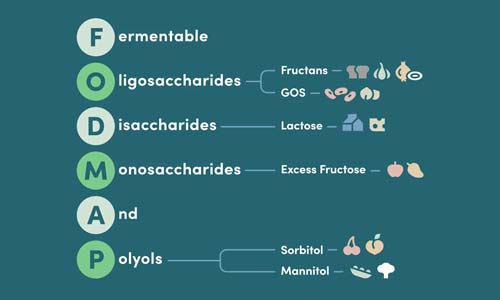Bone Broth for Gut Health: Essential Guide 2025

The Bone Broth Renaissance: Ancient Wisdom Meets Modern Wellness
Bone broth has experienced a remarkable surge from grandma's kitchen staple to trendy wellness elixir, and for good reason. This nutrient-dense, slow-simmered liquid made from bones, connective tissue, and aromatics has captured the attention of health enthusiasts, gut health advocates, and gourmet cooks alike.
Key Takeaways
- Bone broth has transitioned from a traditional kitchen staple to a popular wellness trend.
- It is a nutrient-dense liquid made by slow-simmering bones, connective tissue, and aromatics.
- Bone broth appeals to health enthusiasts, gut health advocates, and gourmet cooks.
- The resurgence of bone broth combines ancient wisdom with modern wellness practices.
Table of Contents
- The Bone Broth Renaissance: Ancient Wisdom Meets Modern Wellness
- What Makes Bone Broth Different?
- The Nutritional Powerhouse: What's Actually in Bone Broth
- How Bone Broth Supports Gut Health
- Separating Fact from Fiction: What Research Actually Shows
- Making Bone Broth at Home: A Complete Guide
- Store-Bought vs. Homemade: Making the Right Choice
- Bone Broth's Role in Your Gut Health Journey
What sets bone broth apart from regular broth isn't just the extended cooking time-it's the concentrated release of collagen, amino acids, and minerals that occurs during those long, gentle hours of simmering. While some claims about bone broth venture into miracle-cure territory, the emerging research on bone broth for gut health reveals genuine benefits worth exploring.
Quick Answer
Bone broth supports gut health through its rich concentration of amino acids like glutamine, glycine, and proline, which help repair and strengthen the intestinal lining. These compounds may reduce intestinal permeability ("leaky gut"), support digestive function, and provide anti-inflammatory benefits for conditions like IBS and IBD, though more human studies are needed to fully establish these effects.
At Gourmend Foods, we've witnessed firsthand how the right bone broth can transform both digestive comfort and culinary experiences. Our customers frequently share stories of improved digestion and reduced bloating after incorporating quality bone broth into their daily routines-particularly those following low FODMAP approaches for IBS management.
What Makes Bone Broth Different?
Definition and Preparation
The distinction between bone broth, regular broth, and stock lies primarily in cooking time and ingredient focus. While regular broth might simmer for 2-4 hours, true bone broth requires 12-24 hours of gentle cooking to extract maximum nutrients from bones and connective tissue.
Bone Broth Advantages
- Higher collagen and gelatin content from extended cooking
- More concentrated amino acid profile
- Greater mineral extraction from bones
- Richer, more complex flavor development
Considerations
- Requires significantly more time to prepare
- Higher energy costs for extended cooking
- Quality depends heavily on bone source and preparation
- May be too rich for some sensitive digestive systems initially
The best bones for bone broth include knuckle bones, marrow bones, and joint bones from grass-fed beef or pasture-raised poultry. These bones are prized for their high collagen content, which breaks down into gelatin during the long cooking process. The addition of a small amount of acid-typically apple cider vinegar-helps extract minerals and encourages collagen breakdown.
For those managing IBS or following a low FODMAP diet, bone broth offers particular advantages. Unlike many commercial broths that contain garlic bulbs or onion powder, properly prepared low FODMAP bone broth uses alternatives like chive sprigs and green leek tops for aromatic depth without digestive distress.
Historical and Cultural Context
Bone broth represents one of humanity's oldest culinary traditions, appearing across cultures from traditional Chinese medicine to European peasant cooking. This cross-cultural presence speaks to both its nutritional value and its role in making use of every part of the animal-a practice modern nose-to-tail eating movements have revived.
The recent renaissance of bone broth aligns with growing interest in ancestral eating patterns and the recognition that traditional food preparation methods often maximize nutritional benefits. Paleo and GAPS diet communities have been particularly instrumental in bringing bone broth back into mainstream consciousness, emphasizing its potential for digestive healing and overall wellness.
The Nutritional Powerhouse: What's Actually in Bone Broth
Key Amino Acids and Protein Content
The true nutritional magic of bone broth lies in its amino acid profile. During the extended cooking process, collagen from bones and connective tissue breaks down into gelatin, releasing a concentrated blend of amino acids that are particularly beneficial for gut health and tissue repair.
The star players include:
- Glutamine - Essential for intestinal cell repair and immune function
- Glycine - Supports collagen synthesis and has anti-inflammatory properties
- Proline - Critical for collagen formation and wound healing
- Arginine - Supports immune function and tissue repair
- Histidine - Important for tissue repair and immune response
What makes these amino acids particularly valuable for bone broth and digestion is their direct role in maintaining and repairing the intestinal lining. Unlike complete proteins that must be broken down during digestion, these amino acids are readily available for the body to use where needed most.
It's important to understand that while bone broth contains collagen-derived amino acids, your body doesn't simply transport these directly to joints or skin. Instead, it uses these building blocks where they're most needed-often in the digestive tract for those with gut health concerns.
Minerals and Specialized Nutrients
Beyond amino acids, bone broth provides a range of essential minerals extracted from bones during the long cooking process. The mineral content includes calcium, phosphorus, potassium, magnesium, and zinc, though levels vary significantly based on the bones used and cooking methods employed.
Bone broth also contains glycosaminoglycans like chondroitin and glucosamine, compounds naturally found in cartilage and connective tissue. While research on their direct benefits from dietary sources is still evolving, these compounds have shown promise in supporting both joint and gut health in preliminary studies.
The Gourmend Foods bone broths (both chicken and beef varieties) are crafted to maximize these nutritional benefits while remaining gentle on sensitive digestive systems. We use organic bones and low FODMAP aromatics to create broths that deliver both exceptional flavor and digestive comfort.
How Bone Broth Supports Gut Health
Enhancing the Intestinal Barrier
The connection between bone broth and gut health centers on its unique ability to support and repair the intestinal lining. The amino acids glutamine, glycine, and proline work synergistically to strengthen what researchers call the intestinal barrier-the crucial protective layer that controls what passes from your digestive tract into your bloodstream.
Glutamine serves as the primary fuel source for intestinal cells, helping them maintain their structure and function. When these cells are well-nourished, they form tighter junctions, reducing intestinal permeability. This is particularly relevant for those wondering is bone broth good for gut health-the answer lies in these fundamental cellular repair processes.
Research indicates that glutamine supplementation can reduce intestinal permeability by up to 40% in some studies, though most research focuses on isolated amino acids rather than whole bone broth consumption.
Glycine contributes additional anti-inflammatory benefits, helping to calm an overactive immune response in the gut. For individuals dealing with chronic digestive inflammation, this amino acid can help break the cycle of irritation and damage that perpetuates gut health issues.
Role in Digestive Disorders
The relationship between bone broth and IBS deserves special attention, as many of our customers report significant improvements in their symptoms after incorporating quality bone broth into their routines. While bone broth isn't a cure for IBS, its amino acid profile supports several mechanisms that can ease digestive discomfort.
For those managing IBS, bone broth offers several advantages:
- Gentle protein source that's easier to digest than solid foods during flare-ups
- Hydration support with electrolytes for those experiencing diarrhea
- Anti-inflammatory compounds that may help reduce gut inflammation
- Low FODMAP preparation when made without garlic bulbs or onion powder
Studies on inflammatory bowel disease (IBD) have shown promising results for amino acid supplementation, particularly glutamine, in reducing inflammation markers and improving intestinal barrier function. While more research specifically on bone broth for digestive health is needed, the mechanistic basis for these benefits is well-established.
The concept of bone broth and leaky gut has gained significant attention in wellness circles. While "leaky gut" isn't an official medical diagnosis, increased intestinal permeability is a recognized phenomenon that can contribute to various health issues. The amino acids in bone broth may help address this by supporting the proteins that hold intestinal cells together.
Immune and Inflammation Support
Beyond direct gut barrier support, bone broth provides compounds that help modulate the immune system's response in the digestive tract. The amino acid arginine supports immune cell function, while glycine has been shown to have anti-inflammatory properties that may help calm an overactive immune response.
For those exploring bone broth gut healing protocols, it's important to understand that benefits typically develop gradually. Most of our customers report initial improvements in digestive comfort within 1-2 weeks of regular consumption, with more significant changes occurring over several months of consistent use.
Separating Fact from Fiction: What Research Actually Shows
Common Myths About Bone Broth
The popularity of bone broth has unfortunately led to some exaggerated claims that deserve clarification. Understanding what bone broth can and cannot do helps set realistic expectations for those seeking bone broth for gut health benefits.
Evidence-Based Benefits
- Provides amino acids essential for gut lining repair
- Offers easily digestible protein during digestive distress
- Contains minerals extracted from bones during cooking
- May help reduce inflammation through glycine content
Overstated Claims
- Direct collagen transport to joints and skin
- Miraculous healing properties for serious conditions
- Guaranteed results for all digestive issues
- Superior mineral content compared to other whole foods
One persistent myth suggests that consuming collagen in bone broth directly translates to improved joint health or skin appearance. While bone broth does contain collagen-derived amino acids, your body breaks these down and uses them where needed most-not necessarily in joints or skin. For individuals with gut health concerns, these amino acids are often prioritized for intestinal repair.
Another common misconception involves mineral content. While bone broth does contain minerals like calcium and magnesium, the amounts vary significantly based on cooking time, bone type, and preparation method. It's not necessarily a "rich source" of these nutrients compared to other whole foods.
What the Research Actually Shows
Current research on bone broth and digestion focuses primarily on individual amino acids rather than whole bone broth consumption. Studies on glutamine supplementation show promising results for intestinal barrier function, with some research indicating reduced intestinal permeability in both healthy individuals and those with digestive disorders.
A 2017 study published in the Journal of Clinical Medicine found that glutamine supplementation helped reduce intestinal permeability in patients with Crohn's disease. While this research used isolated glutamine rather than bone broth, it supports the theoretical basis for bone broth's gut health benefits.
Key research insight: Most studies showing digestive benefits use isolated amino acids in doses higher than what's typically found in a serving of bone broth. This suggests that while bone broth may be beneficial, it shouldn't be viewed as a medical treatment.
The limited clinical trials specifically examining bone broth as a whole food highlight the need for more comprehensive research. However, the mechanistic understanding of how individual amino acids support gut health provides a solid foundation for bone broth's potential benefits.
For those dealing with IBS and bone broth, anecdotal evidence from our customers suggests that quality, properly prepared bone broth can be a valuable addition to a comprehensive gut health approach. The key lies in choosing bone broths made without high FODMAP ingredients and introducing them gradually to assess individual tolerance.
If you're interested in exploring more ways to support digestive wellness, check out our collection of low FODMAP recipes for inspiration on gut-friendly meals.
Making Bone Broth at Home: A Complete Guide

Selecting the Right Bones
The foundation of any quality bone broth for gut health starts with choosing the right bones. Different bones contribute varying amounts of collagen, minerals, and flavor compounds that support digestive wellness.
Best Bones for Gut Health
- Knuckle bones (high collagen content)
- Marrow bones (rich in minerals)
- Chicken feet (maximum gelatin)
- Beef short ribs (flavor and nutrients)
Less Ideal Options
- Lean meat bones (minimal collagen)
- Pre-cooked bones (reduced nutrients)
- Very old frozen bones (quality degradation)
- Bones from unknown sources (quality concerns)
For optimal bone broth gut healing properties, combine 2-3 pounds of mixed bones with at least 50% being joint or knuckle bones. These contain the highest concentration of collagen-producing compounds that break down into the amino acids your gut lining needs for repair.
The Cooking Process
Proper preparation maximizes the extraction of beneficial compounds that make bone broth for digestive health so effective. The process requires patience, but the results are worth the time investment.
- Roast bones (optional): Roast at 400°F for 30-45 minutes for deeper flavor
- Add acid: Use 2 tablespoons apple cider vinegar per 4 quarts water to help extract minerals
- Initial simmer: Bring to a gentle boil, then reduce to lowest simmer setting
- Skim foam: Remove impurities during the first 30 minutes
- Add aromatics: Include chive sprigs, green leek tops, and celery for low FODMAP flavor
- Long simmer: Cook for 12-24 hours, adding water as needed
- Strain and cool: Remove solids and refrigerate until gelled
A properly made bone broth should gel when refrigerated, indicating high gelatin content. If your broth doesn't gel, it may still contain beneficial amino acids, but the collagen extraction was incomplete.
The relationship between bone broth and IBS often depends on preparation method. For those with sensitive digestive systems, avoid high FODMAP vegetables like onion bulbs or garlic cloves. Instead, use the green portions of leeks and fresh chive sprigs to achieve similar flavor depth without triggering symptoms.
Storage and Safety
Proper storage ensures your bone broth for gut health remains safe and retains its beneficial properties. Fresh bone broth can be stored in the refrigerator for up to 5 days or frozen for up to 6 months.
For maximum convenience, freeze bone broth in ice cube trays or small containers. This allows you to defrost only what you need for cooking or sipping. When reheating, gentle warming preserves the amino acid integrity better than rapid boiling.
Store-Bought vs. Homemade: Making the Right Choice
Benefits of Quality Commercial Options
While homemade bone broth offers complete control over ingredients, high-quality commercial options can provide consistent bone broth for digestive health benefits without the time investment. The key lies in choosing products that prioritize gut health-supporting ingredients.
At Gourmend Foods, our bone broths (both chicken and beef varieties) are specifically crafted to support digestive wellness. We use chive sprigs, green leek tops, and scallion greens to create onion-like depth without high FODMAP ingredients. Our beef and vegetable bone broths also include nori seaweed and oyster mushrooms for additional umami and gut-supporting compounds.
Quality indicator: Look for bone broths that gel when refrigerated and list bones as the first ingredient. Avoid products with artificial flavors, excessive sodium, or high FODMAP ingredients if you're managing digestive sensitivities.
Commercial bone broths offer several advantages for those exploring bone broth and gut health:
- Consistency: Standardized amino acid and mineral content
- Convenience: Ready to use for cooking or sipping
- Food safety: Professional processing reduces contamination risk
- Shelf stability: Longer storage life than homemade versions
Incorporating Bone Broth Into Your Daily Routine
The most effective approach to bone broth gut healing involves consistent, moderate consumption rather than occasional large amounts. Most of our customers find success with 8-12 ounces daily, either as a warm beverage or incorporated into meals.
For those managing IBS and bone broth integration, start with smaller amounts (4-6 ounces) to assess tolerance. The amino acids in bone broth are generally well-tolerated, but individual responses can vary based on overall gut health status.
Creative ways to include bone broth in your routine include using it as a cooking liquid for quinoa or rice, as a base for low FODMAP soups, or simply warmed with a pinch of sea salt as a comforting beverage. The versatility makes it easy to maintain consistent intake for optimal digestive support.
To learn more about digestive wellness and the science behind gut-friendly foods, visit our learn section for in-depth articles and resources.
Bone Broth's Role in Your Gut Health Journey
The evidence supporting bone broth for gut health continues to grow, with research highlighting the importance of amino acids like glutamine, glycine, and proline in maintaining intestinal barrier function. While bone broth isn't a cure-all for digestive issues, it provides a nutrient-dense, easily digestible source of compounds that support gut lining repair and overall digestive wellness.
For individuals exploring the connection between bone broth and digestion, the key lies in choosing quality products or preparing homemade versions with gut health in mind. This means avoiding high FODMAP ingredients that can trigger symptoms while maximizing the extraction of beneficial amino acids and minerals.
The relationship between bone broth and leaky gut represents one of the most promising areas of research, with studies on individual amino acids showing significant benefits for intestinal permeability. As our understanding of the gut microbiome and intestinal barrier function continues to evolve, bone broth's role as a supportive food becomes increasingly clear.
Remember that bone broth works best as part of a comprehensive approach to gut health that includes stress management, adequate sleep, and a diverse, nutrient-dense diet. It's a valuable tool in your digestive wellness toolkit, not a standalone solution.
Whether you choose to make bone broth at home or select a high-quality commercial option like Gourmend's shelf-stable bone broth cartons, consistency matters more than perfection. Start with small amounts, listen to your body's response, and gradually increase intake as tolerated.
The future of bone broth for digestive health research looks promising, with ongoing studies examining its effects on various digestive conditions and overall gut microbiome health. As this research develops, bone broth's position as a traditional food with modern scientific backing continues to strengthen, offering hope and practical support for those seeking natural approaches to digestive wellness. For a deeper dive into the science behind bone broth's benefits, see this authoritative overview from Cleveland Clinic.
Check out our Broth Lover Bundle
**Frequently Asked Questions
Does bone broth really heal the gut?
Bone broth supports gut health by providing collagen, amino acids, and minerals that may help soothe the digestive lining and promote easier digestion. While it’s not a magic cure, its rich nutrients contribute to a balanced, gentle environment for the gut, making it a flavorful ally in your digestive wellness routine.
How much bone broth should I drink for gut health?
A sensible starting point is one cup (about 8 ounces) of bone broth daily, which provides beneficial nutrients without overwhelming your system. You can adjust based on your tolerance and preferences, keeping in mind that consistent, moderate intake fits best within a balanced, low FODMAP lifestyle.
What type of bone broth is best for gut health?
Choose a high-quality bone broth like Gourmend’s chicken or beef bone broths, which are shelf-stable and made with onion-friendly aromatics like chive sprigs and leek greens for depth. These broths include nutrient-rich ingredients such as nori seaweed and oyster mushrooms for natural umami and gut-friendly benefits.
How do you reset your gut with bone broth?
Resetting your gut with bone broth means incorporating it regularly as part of a gentle, low FODMAP diet to support digestion and reduce discomfort. Using it as a base for soups or sipping it between meals can nourish your digestive tract while providing satisfying flavor without triggering common irritants.
What is the downside of bone broth?
Bone broth is generally gut-friendly, but some people may find it too rich or experience mild sensitivity to certain amino acids or minerals if consumed in excess. Additionally, homemade or low-quality broths can contain high FODMAP ingredients, so it’s important to choose carefully and stick to trusted sources like Gourmend.
How long does it take to heal a leaky gut with bone broth?
Healing the gut lining is a gradual process that varies for each person, often taking weeks to months depending on diet and lifestyle. Bone broth can be a supportive part of this journey, but it works best alongside a comprehensive low FODMAP approach and mindful eating habits rather than as a standalone solution.





